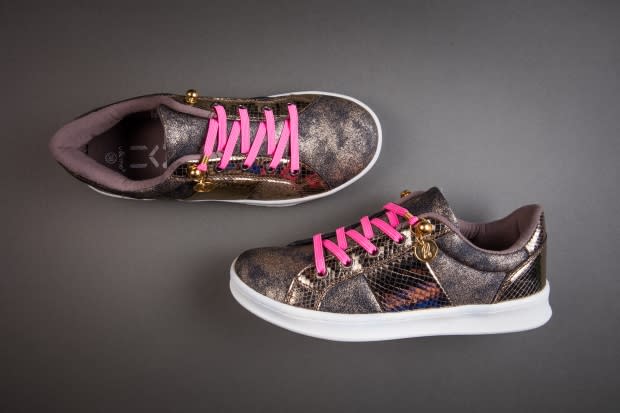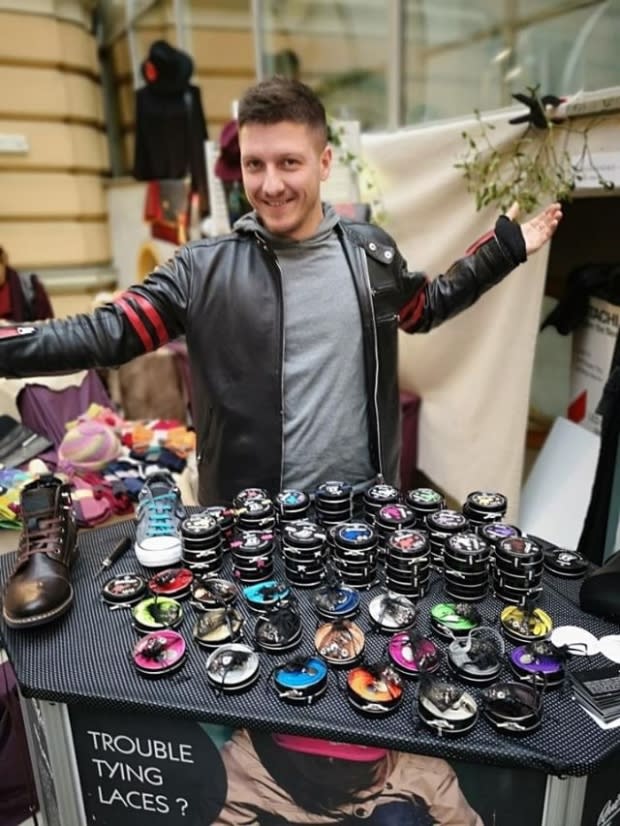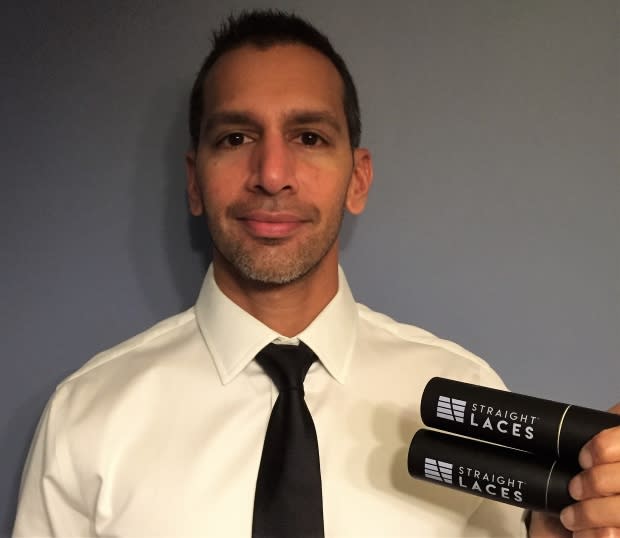The race is on to build a better shoelace — and companies are stepping up
It's something that hasn't really changed much over the centuries, but there are suddenly plenty of new options for people to choose from when it comes to the simple act of tying — or not tying — their shoes.
It's a twist on the old "build a better mousetrap" trope, with new shoelace systems claiming to be a huge step up from the old bow knot when it comes to ease of use, freedom from foot pain, efficiency and — especially — fashion.
Just type "shoelace system" into a Google or Amazon search and watch them kick up literally hundreds of results offering new ways to fasten footwear.
"I just hate tying shoelaces. And it is a bad design. The laces, the classic ones, are just ugly," said David Knez, founder and CEO of QuickShoeLace.
He said because shoelaces hadn't evolved much over the last hundred years or so, change was overdue.
"[In the past,] people never thought the lace could be fashionable," he said.
"If a man can write a better book, preach a better sermon or make a better mouse trap than his neighbours, though he builds his house in the woods, the world will make a beaten path to his door." - Ralph Waldo Emerson
Knez's product is a flat, elastic lace that doesn't need to be tied. Instead, it has a ring on the end of the lace that is pulled snug and then clipped over a peg.
Knez's system comes in multiple colours and the metal fasteners can also be customized.

"This is not just a lace, it's a shoe accessory. It's more than just a lace, it changes the shoe design," Knez said.
"I have 24-carat gold metal clasps. Next year, I'll have a black line, [and] you can put company logos on them."
QuickShoeLace is sold direct-to-consumer in Europe for 15 euros and is available on the U.S. Amazon site for $17.99. It's not yet available in Canada.
But Canadians have no shortage of choice when it comes to shoelace alternatives.
Next-gen laces
Take Xpand laces. Founded and designed by an American but now headquartered in Toronto, the company raised a remarkable $1.2 million US from more than 37,000 backers on Kickstarter and Indiegogo. It was started by Las Vegas native Charles Harris who, like Knez, hated the look of his old-school kicks.
"I was tying bow knots and I'm like, I hate the way the floppy bow looks hanging off the top of the shoe. And when I was younger, I'd tuck it inside and just stand on the laces, but it was really uncomfortable," said Harris.
"So I thought, let's make a clip that literally goes right behind the eyelet and holds your lace and you can trim off all the extra [lace]. And now you can slip your shoes on and off, and get the look that you want and you don't have to stand on your laces."
Not only does it hide the fasten point, but once in place, the Xpand system allows the wearer to slip shoes on and off without having to tie and untie their shoes.
Harris said that struck a chord with many of his crowdfunding backers, and it showed him just how many people have trouble tying their shoes. He cited people "with back problems, pregnant women, people with tendonitis, people with arthritis that can't bend over" as well as "people with diabetes that have feet that swell, people with feet that just swell in general."
Some backers said regular laces caused foot pain. Marathon runners said they wanted something easier on their feet on long runs, while triathletes wanted to get in and out of their shoes faster.
Harris, who came up with the Xpand idea back in 2012, wasn't the first to try to build and sell a better shoelace online. But his remarkable crowdfunding campaigns didn't go unnoticed. And over the last three years, the alternative shoelace space has exploded.
"Your [crowdfunding] numbers are out there, so it shows people there's a huge market," said Harris. "Obviously, everyone wears shoes. Everyone has to take them on and off every day. And lots of people have foot problems. So if you can come up with something creative that grabs people's attention, you have a great chance of success."
'Overdue for an update'
"The footwear industry was long overdue for an update and is finally realizing this," said Keith Martine, PR and communications manager for Hickies, another alternative shoe fastener.
Hickies no-tie laces promise to turn shoes into slips so you'll never have to tie your shoes again. Instead of a single lace, they're a series of individual elasticized bands that anchor through the eyelets. The bands expand and contract, allowing the user to slip the shoes on and off.
"Besides velcro and the likes of bungee laces, there was no product that was thoughtfully designed that offered the convenience of a slip-on with a fully customizable fit that was esthetically appealing," he said
There are now niche variations in this new (foot)space. Straight Laces, started by Chicago private equity investor Jay Thukkaram, are fashion-oriented but designed to be worn with business attire.
"I just thought it would be awesome to have that look with my shoe without having to tuck it in," said Thukkaram.

"The tricky part about men's dress shoes is that they are usually leather, they're very thin, and so the biggest issue is not having a big nodule or bump in your shoe that's uncomfortable."
Thukkaram has also raised thousands on Kickstarter. Beyond fashion and health, he sees another reason for the sudden popularity of what are essentially slip-on shoes.
"There's a trend towards efficiency — you know, hacking things, trying to do things quicker, faster," he said.
"The simple act of tying your shoes is extremely inefficient. And I think people are probably looking for something that's, like, in and out of the door and not wasting that time."
Seeking alternatives
In today's fast-paced society, it seems even the few moments it takes to bend over and tie your shoes is considered a waste of time and effort.
"People have difficulty with shoelaces," said Ian Fieggen, one of the internet's foremost experts on the subject.
"And it's those people who are having frustration with their shoelaces in daily lives who seek alternatives."

Ian Fieggen, who goes by Professor Shoelace in his popular YouTube videos, said even with all the newfangled technology, the old-fashioned bow knot is still the way to go.
"They're an extremely flexible way of fastening your shoes," he said.
"You can use a lacing method that will introduce a gap at the top of the lace to relieve pressure from a sore part of the foot. You can use lacing methods that will pull the laces up off the big toe, if you've got problems with it impacting your big toe. There are all sorts of variations to lacing to provide more security or more flexibility over the shoe," he said.
"Every type of elastic shoelace that I've used, great to slip the shoes on and off, but the shoe never really feels totally secure."
A properly tied shoelace, he said, will stay tied all day long.
That, of course, is the opinion of someone who is remarkably fond of shoelaces. But Fieggen also pointed out that regular laces come in all sorts of colours, they're inexpensive and easily replaceable.
Even so, the runaway success and sheer number of alternatives now out there shows just how many people appear to be ready to walk away from the traditional shoelace.


